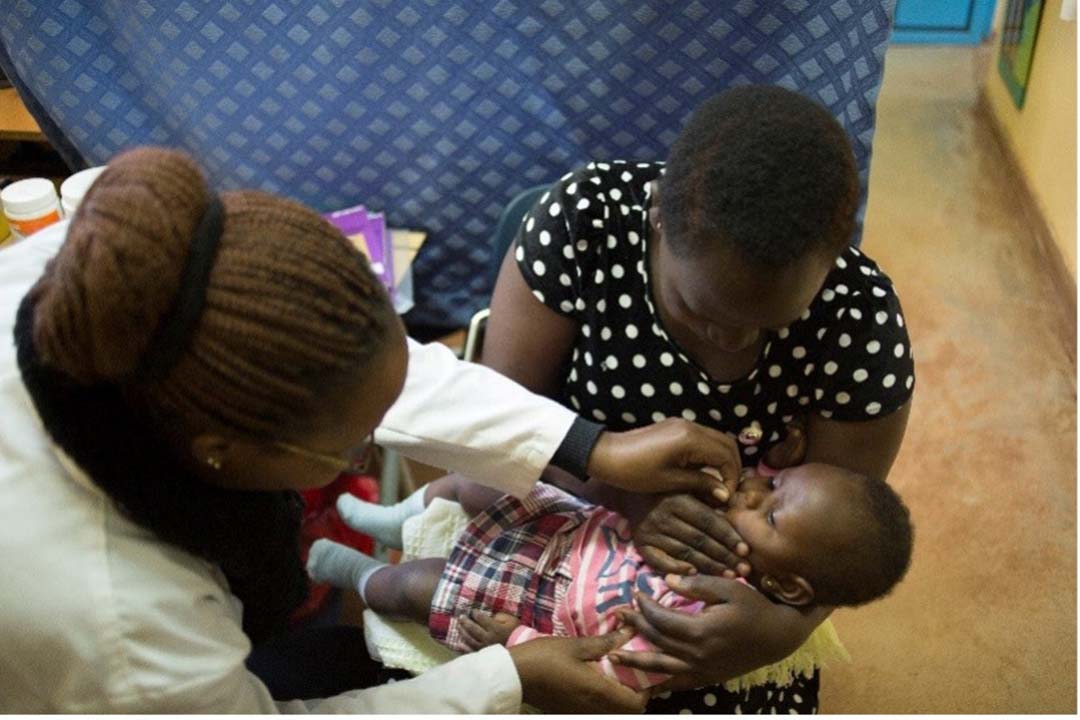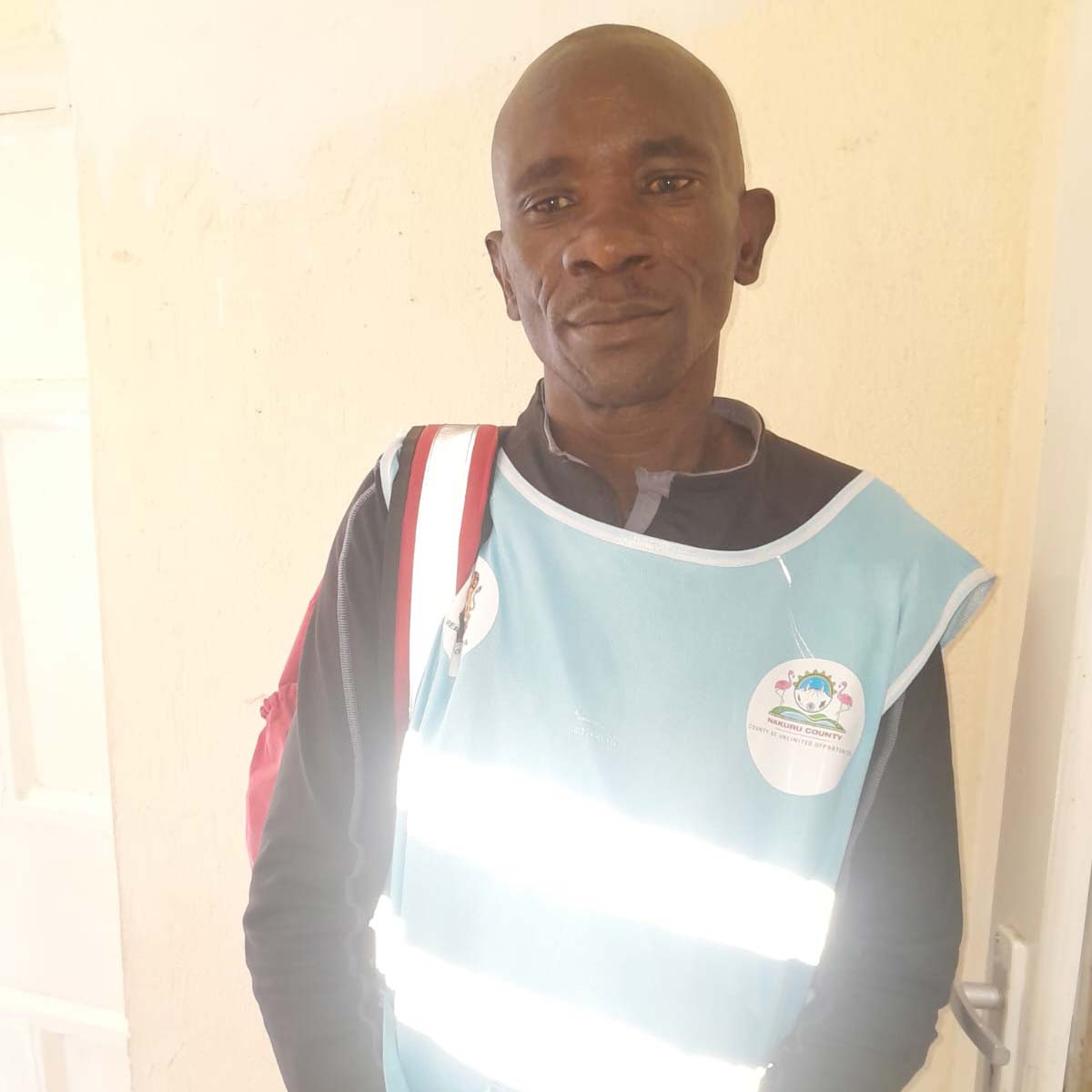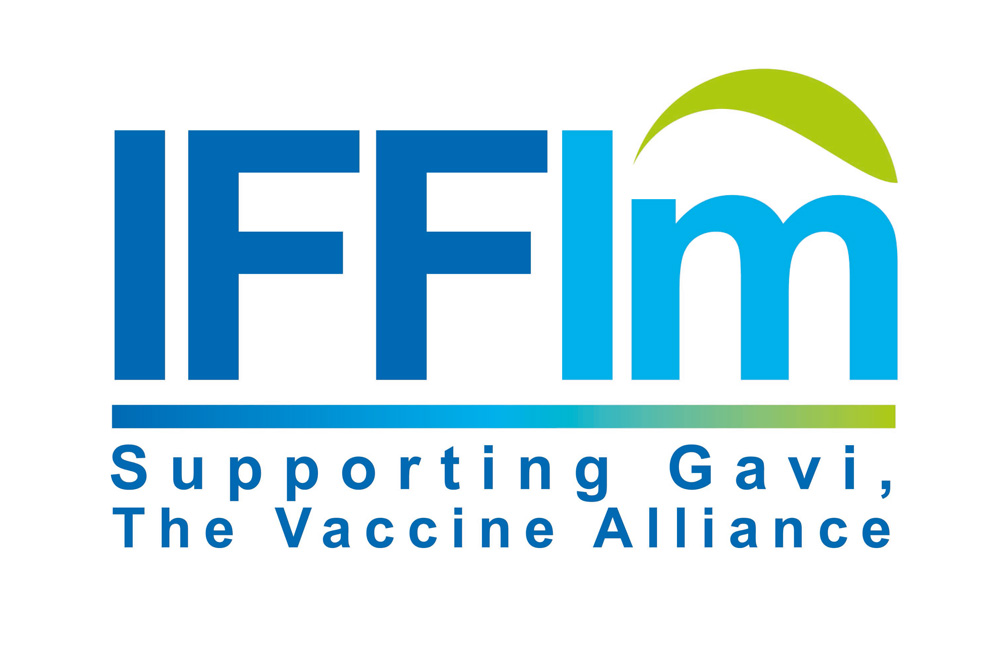In Kenya, a decade of rotavirus vaccination translates to a drop in childhood mortality
- Impact
- In Kenya, a decade of rotavirus vaccination translates to a drop in childhood mortality
In Kenya, a decade of rotavirus vaccination translates to a drop in childhood mortality
4 August 2025

A volunteer clinician gives an infant a dose of a vaccine in Kaptembwa. Credit: Julie Mwabe, CDC Kenya
Not only are fewer children being hospitalised with severe diarrhoea, but the vaccine’s evident impact is boosting confidence in immunisation generally, experts say.
By Joseph Maina
Announcements
IFFIm impact: rotavirus
Since its inception, IFFIm has disbursed US$ 304 million to Gavi for rotavirus programmes.
Kihoto, a densely packed settlement hugging the banks of Lake Naivasha in Kenya’s Rift Valley, has become a living argument for rotavirus vaccination.
Here, in this flat stretch of land where the lake often swells into backyards, diarrhoea is a chronic threat to life, exacerbated by poor sanitation and a growing population.

In this landscape of recurring illness, Nancy Karanja, 54, a local grandmother, plays the role of witness and informal chronicler. Her home, like many in Kihoto, is surrounded by shallow wells and pit latrines – many of which flood when the lake creeps inland. It wasn’t always like this.
“Growing up, the lake was far off,” she said. “We used to draw water from wells that went down 30 feet or more. These days, the water is just below the surface, and I think therein lies the problem.”
Like many of her neighbours, Karanja believes that the rising water table – coupled with an inadequate sewerage system – has transformed Kihoto into fertile ground for illness. “Diarrhoea is common among both children and adults,” Nancy told VaccinesWork during an interview at her home, adding that she recently suffered an episode herself.
Naivasha town has been repeatedly spotlighted in media reports for its high rates of diarrhoeal disease, particularly among children. In 2014 – the year that the rotavirus vaccine first joined Kenya’s routine immunisation schedule – medical officers at the Naivasha Subcounty Referral Hospital revealed that 50% of paediatric admissions were diarrhoea cases. Rotavirus, a highly contagious virus that causes acute gastroenteritis and spreads in contaminated food and water, was identified as the dominant cause, responsible for 56% of diarrhoea cases in Kenya at the time.
Change comes to Kihoto
Back then, diarrhoea was an urgent and widespread threat to life – especially for the youngest residents.
“You would hear about children being rushed to the hospital, weak and dehydrated,” said Fredrick Chege, a community health promoter (CHP) stationed in Kihoto. “Many mothers would come to a local clinic with panic on their faces , especially during the rainy season.”
According to Chege, food and water contamination was a major culprit. “We have poor sewerage here. Toilets overflow. People still rely on shallow wells. And food vendors get vegetables from farms irrigated with sewage water.”
These challenges remain, but both Karanja and Chege say things health outcomes have changed for the better, particularly for younger children.
“Since the vaccine was introduced,” Chege noted, “we still see diarrhoea – that has not stopped completely – but the very severe ones, the ones that required admission? They have reduced. Vaccinated children recover faster, and we rarely see cases of extreme dehydration like before.”
Karanja agrees. Her grandchildren, who live with her, were vaccinated against rotavirus – and she has seen the difference firsthand.
“Their stomach problems are fewer. And when they do get sick, they bounce back quickly. I think that vaccine is what has helped this household.”

Few cases among the unvaccinated
Across Naivasha, health workers describe a profound shift in how childhood diarrhoea is understood. Kirimi Nkatha, a clinical officer who runs a small private facility called Kihoto Links Medical Clinic, says a number of his referrals are still diarrhoea-related, but expectations have changed.
“About a decade ago, we would see a steady stream of children with watery diarrhoea – many of them under five. It was a constant concern. Today, we see fewer severe cases among vaccinated kids. The problem now is making sure everyone gets the vaccine,” he told VaccinesWork at his clinic.
He points to another persistent challenge: access to clean water. “Our vegetables come from polluted farms. Sewerage is openly flowing in parts of Kihoto. We are managing symptoms, not solving the root.”
Nkatha has also had to push back against cultural barriers. “Some people here still prefer herbal remedies, or they do not believe in modern medicine. We are seeing improvement, but vaccine awareness needs to be strengthened.”
“Marked drop in childhood mortality”
The benefits of Kenya’s rotavirus vaccine roll-out, which was introduced into the national immunisation schedule in 2014, are supported by science. According to Dr Margaret Lubaale, Executive Director of the Health NGOs Network (HENNET), Kenya has witnessed a 60–70% reduction in rotavirus-related hospitalisations in high-burden counties.
“This decline has translated into a marked drop in under-five mortality linked to diarrhoeal diseases, once among Kenya’s top child killers,” Dr Lubaale explained to VaccinesWork. “Beyond the clinical outcomes, the vaccine has not only saved lives but also strengthened public trust in routine immunisation. Caregivers now see real benefits: fewer hospital bills, healthier children.”
Rotavirus still a threat – vaccines are the “best defence”
But while the vaccine has clearly delivered a blow to the virus, it’s far from a knock-out blow.
“Rotavirus is still very present in Kenya,” said Dr George Obiero, a research scientist and a senior lecturer of molecular biology, genomics and applied bioinformatics at the Department of Biochemistry and Biotechnology, The Technical University of Kenya. “In our studies at Mbagathi and Mama Lucy hospitals in Nairobi, we confirmed that it remains a frontline cause of diarrhoea among children.”
He added that informal settlements, with high population turnover and poor sanitation, create ideal conditions for the virus to thrive.
“Accessing healthcare is also costly for low-income families. So the best defence – and the most affordable – is vaccination.”
Still, challenges remain. Dr Lubaale warns that vaccine supply consistency, financing and community awareness must be improved to sustain these gains.
“Gavi support is phasing out by 2029,” she said. “Kenya must scale up domestic funding, align county procurement with national systems and institutionalise civil society participation in immunisation planning.”
She also flagged vaccine hesitancy and misinformation in informal settlements and underserved remote regions as growing concerns.
“There is a need for sustained community engagement strategies using trusted local influencers like CHPs, religious leaders and mothers’ groups. We must invest in communication strategies rooted in local realities.”
And local realities, in Kihoto, are stubborn.
As Nancy Karanja walked through the narrow paths around her compound, she pointed to a sunken patch of earth behind her house – once a vegetable garden, now a breeding ground for mosquitoes.
“That used to be dry. But these days, after it rains, the lake water pushes all the way here.”
Still, she smiled when she talked about her grandchildren. “They are strong,” she said. “I thank God. And I thank the people who brought those vaccines.”
Kihoto remains vulnerable. But in the daily rhythms of illness and survival, the rotavirus vaccine has drawn a new line – one that keeps the worst at bay.
 | This article is republished from VaccinesWork under a Creative Commons license. Read the original article. VaccinesWork is an award-winning digital platform hosted by Gavi, the Vaccine Alliance covering news, features and explainers from every corner of global health and immunisation. |
Share this article
Restricted Access Library
 The material in this Restricted Access Library is intended to be accessed only by persons with residence within the territory of a Member State of the European Union and is not intended to be viewed by any other persons. The material in this Restricted Access Library is provided by IFFIm for information purposes only and the materials contained herein were accurate only as of their respective dates. Certain information in the materials contained herein is not intended to be, and is not, current. IFFIm accepts no obligation to update any material contained herein.
The material in this Restricted Access Library is intended to be accessed only by persons with residence within the territory of a Member State of the European Union and is not intended to be viewed by any other persons. The material in this Restricted Access Library is provided by IFFIm for information purposes only and the materials contained herein were accurate only as of their respective dates. Certain information in the materials contained herein is not intended to be, and is not, current. IFFIm accepts no obligation to update any material contained herein.
Persons with residence outside the territory of a Member State of the European Union who have access to or consult any materials posted in this Restricted Access Library should refrain from any action in respect of the securities referred to in such materials and are otherwise required to comply with all applicable laws and regulations in their country of residence.
By clicking Access restricted content: DYNAMIC-LINK-TEXT I confirm that I have read and understood the foregoing and agree that I will be bound by the restrictions and conditions set forth on this page.
The materials in this Restricted Access Library are for distribution only to persons who are not a "retail client" within the meaning of section 761G of the Corporations Act 2001 of Australia and are also sophisticated investors, professional investors or other investors in respect of whom disclosure is not required under Part 6D.2 of the Corporations Act 2001 of Australia and, in all cases, in such circumstances as may be permitted by applicable law in any jurisdiction in which an investor may be located.
The materials in this Restricted Access Library and any documents linked from it are not for access or distribution in any jurisdiction where such access or distribution would be illegal. All of the securities referred to in this Restricted Access Library and in the linked documents have been sold and delivered. The information contained herein and therein does not constitute an offer for sale in the United States or in any other country. The securities described herein and therein have not been, and will not be, registered under the U.S. Securities Act of 1933, as amended (the "Securities Act"), and may not be offered or sold in the United States except pursuant to an exemption from, or in a transaction not subject to, the registration requirements of the Securities Act and in compliance with any applicable state securities laws.
Each person accessing the Restricted Access Library confirms that they are a person who is entitled to do so under all applicable laws, regulations and directives in all applicable jurisdictions. Neither IFFIm nor any of their directors, employees, agents or advisers accepts any liability whatsoever for any loss (including, without limitation, any liability arising from any fault or negligence on the part of IFFIm or its respective directors, employees, agents or advisers) arising from access to Restricted Access Library by any person not entitled to do so.
"Relief" for mothers in Bayelsa state as malaria vaccine makes waves
07 November 2025
